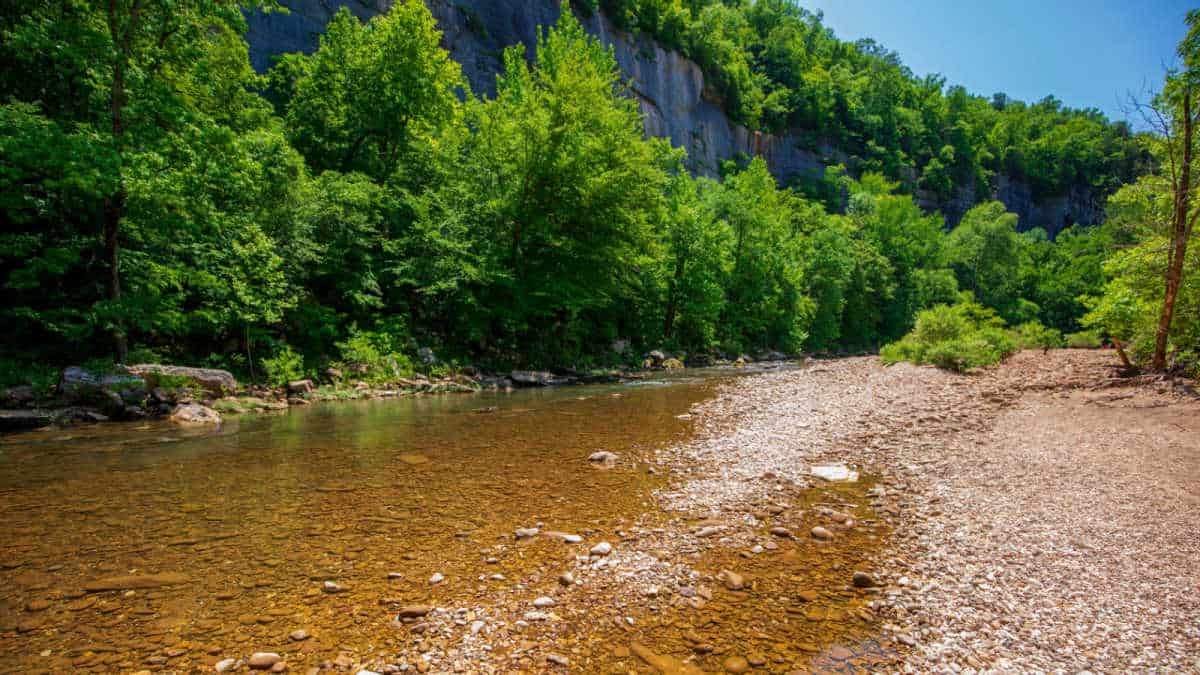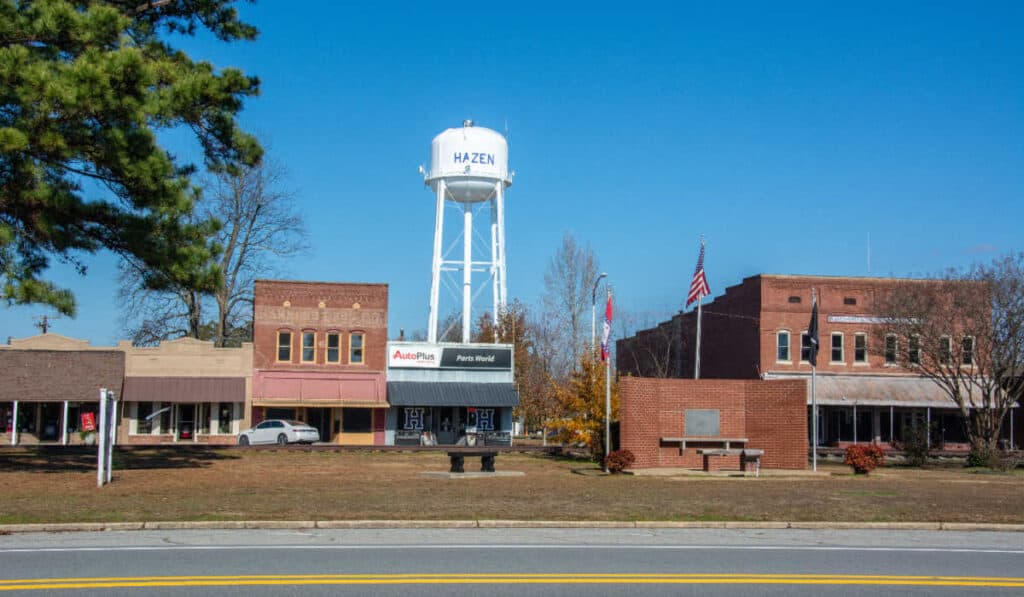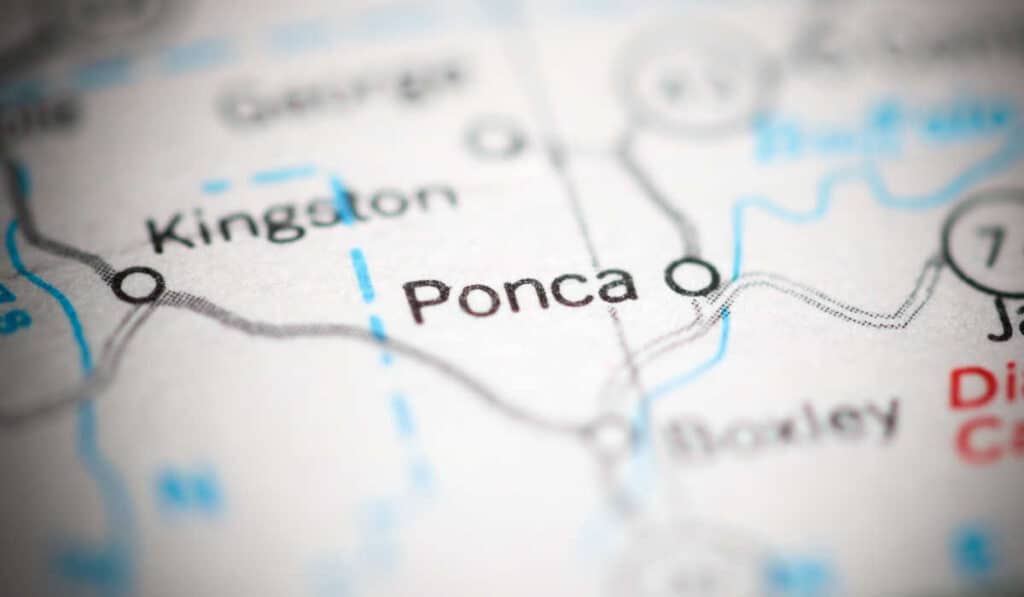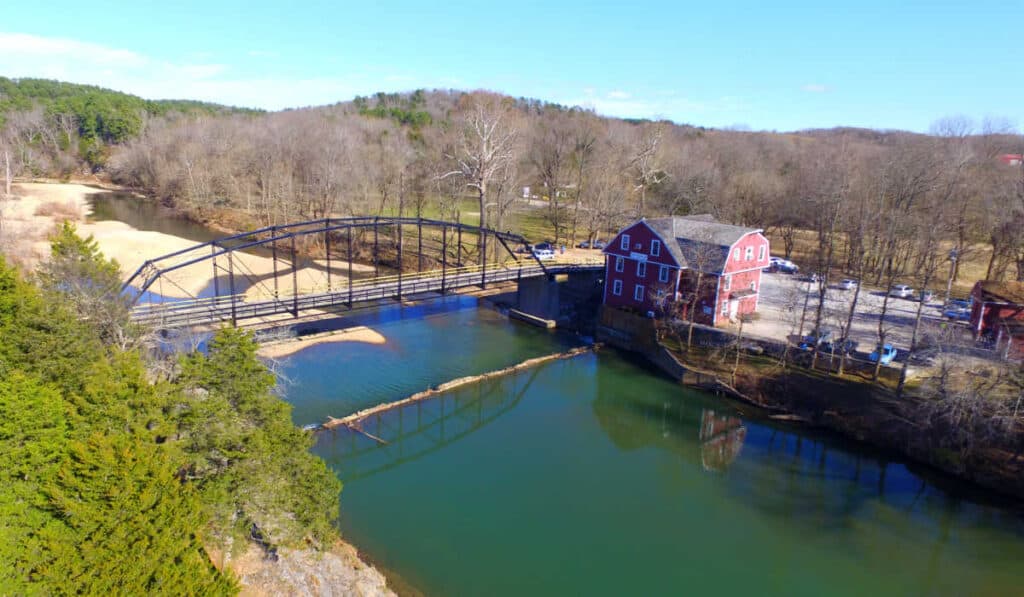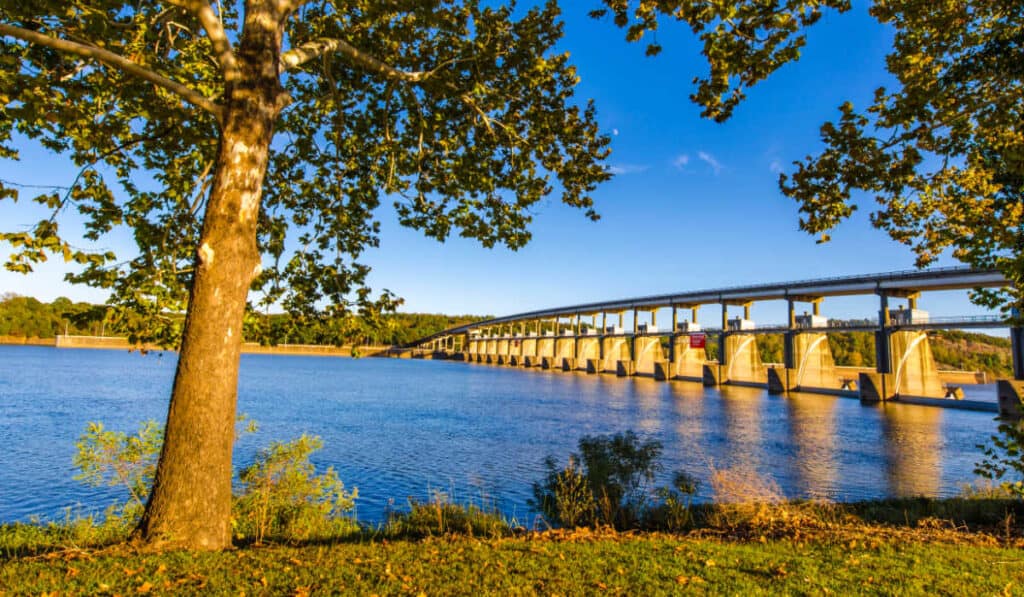Nestled in the beautiful Ozark Mountains of northern Arkansas, the Buffalo National River offers a pristine environment for outdoor enthusiasts to explore. With over 135 miles of free-flowing water, this iconic river is the perfect setting for unforgettable camping experiences. Whether it’s a family vacation or a solo adventure, Buffalo River camping provides visitors with a unique opportunity to connect with nature, embrace the great outdoors, and create lasting memories.
The Buffalo National River is home to numerous campgrounds that cater to a variety of needs and preferences, from developed sites with modern amenities to more secluded spots offering a true escape. The campgrounds in the park are managed by the National Park Service and include options like Steel Creek, Kyle’s Landing, and Buffalo Point. Some campgrounds, such as Buffalo Point, even offer water and electric hookups for RVs, making it an ideal destination for all types of campers.
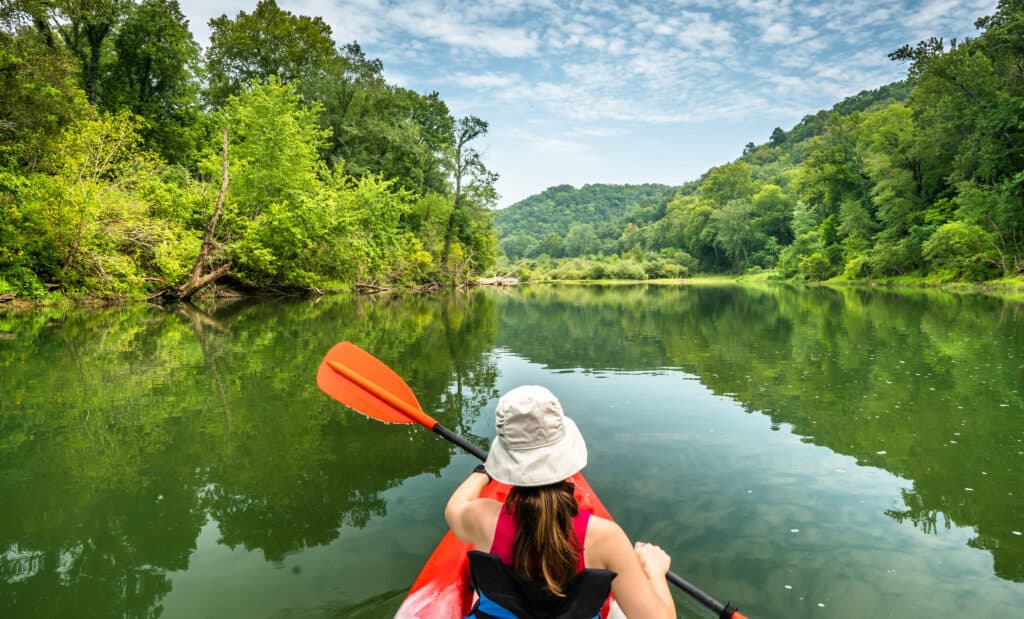
In addition to camping, visitors to the Buffalo River can engage in various recreational activities like hiking, wildlife watching, canoeing, and kayaking. The diverse landscape and rich history of the region provide endless opportunities for exploration and discovery. So, if you’re looking for a unique outdoor experience in a breathtaking natural setting, Buffalo River camping should definitely be on your bucket list.
Buffalo River Camping Overview
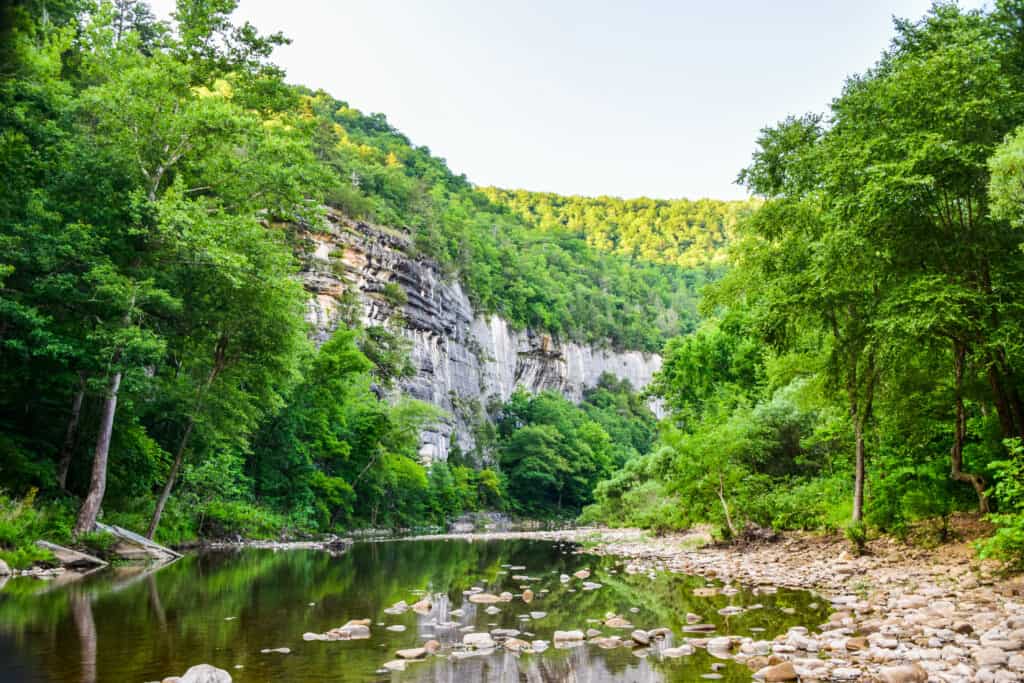
Why Buffalo River Camping?
Camping along the Buffalo River offers a perfect opportunity to connect with nature and immerse yourself in America’s first national river. Situated in the beautiful Arkansas Ozarks, Buffalo River camping provides various recreational activities, such as kayaking, mountain biking, hiking, and horseback riding. In addition, the pristine night sky offers an incredible stargazing experience for campers.
Upper District
The Upper District of the Buffalo National River is ideal for those seeking adventure and wilderness. Here, you can find the Steel Creek Campground, which is known for its iconic bluffs surrounding the campground. It features 26 tent campsites and 14 horse sites, all at a fee of $20 per site, per night. Its proximity to hiking trails, watercraft-launch areas, and a fun watering hole with a rope swing makes it a popular choice among campers.
Middle District
The Middle District offers a blend of activities suitable for all ages. You’ll find a range of designated National Park Service campgrounds and multiple gravel bars along the river for camping. The Middle District offers easy access to several trails, perfect for hiking and biking enthusiasts. While camping in this district, ensure that you follow the regulations set by the Buffalo National River to protect the environment.
Lower District
The Lower District features cabins on the river for those who want more rustic charm while enjoying proximity to the water. Built by the Civilian Conservation Corps, these cabins are available from March to November 30. Reservations are recommended a year in advance by calling Buffalo Point. Furthermore, the Lower District is home to the Lost Valley Trail, which offers campers scenic hiking opportunities. However, camping is prohibited along the entire length of the Lost Valley Trail and all caves and rock shelters within Buffalo National River to preserve the area’s natural resources.
Types of Campgrounds
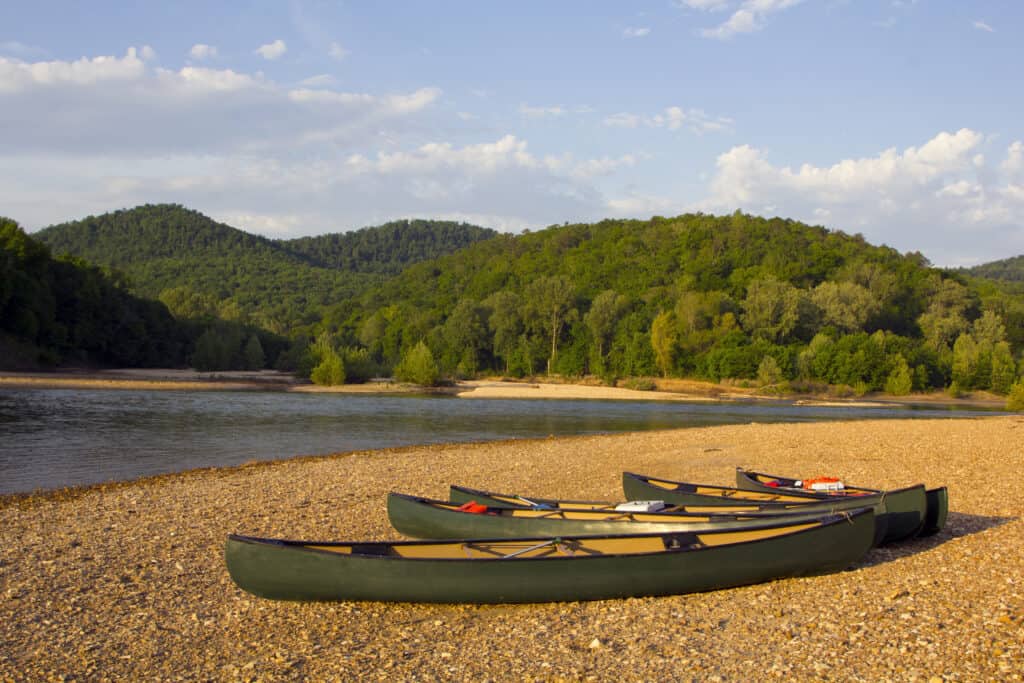
Developed Campgrounds
Developed campgrounds along the Buffalo River offer a range of amenities and facilities for a comfortable camping experience. These campgrounds typically have designated sites for tents and RVs, with some sites featuring electricity hookups. Facilities may include potable water, picnic tables, fire rings, and vault toilets for campers’ convenience. Some of the popular developed campgrounds in the Buffalo River area are Steel Creek and Kyle’s Landing. Fees are usually charged for the use of these campgrounds, which are maintained by the National Park Service or private organizations.
Primitive Campgrounds
For those seeking a more rustic and secluded experience, primitive campgrounds provide limited amenities and fewer facilities. These campgrounds usually offer basic services, such as vault toilets and fire rings, but may not have potable water, electricity, or designated sites for tents or RVs. These campgrounds are often located in more remote areas, where campers can immerse themselves in the natural surroundings. Some examples of primitive campgrounds along the Buffalo River include Erbie and Mount Hersey. Fees may be lower than developed campgrounds or even free, but campers should be prepared for more rugged conditions.
Group Campgrounds
Group campgrounds cater specifically to larger groups, such as family reunions, scouting troops, and outdoor clubs. These campgrounds offer more spacious campsites, accommodating multiple tents or RVs, and may provide additional amenities like group fire rings, picnic shelters, and tie-down areas for horses. Group campgrounds typically require reservations in advance and might charge higher fees to cover the additional space and facilities provided.
Select Campgrounds and Amenities
Buffalo Point Campground
Buffalo Point Campground, located in the Buffalo National River park, offers a variety of amenities such as picnic tables, fire rings, and restrooms. This campground is ideal for family camping trips as it is close to the river, providing options for kayaking, canoeing, and tubing. Pets are welcome, but they must be on a leash at all times.
Steel Creek Campground
Steel Creek Campground is known for its iconic bluffs and proximity to epic hiking trails. It also offers a fun watering hole with a rope swing and a take-out area to launch watercraft. The night sky at Steel Creek is incredible, making it an ideal location for stargazing. There are no shower facilities at this campground, but restrooms are available.
Tyler Bend Campground
Tyler Bend Campground is located near the Tyler Bend Visitor Center and offers various amenities such as fire pits, picnic tables, and restrooms. The campground supports a range of activities like hiking, swimming, and canoeing. Since this is a first-come, first-serve campground, it’s essential to arrive early for the best spot and availability.
Kyles Landing Campground
Kyles Landing Campground is situated near the banks of the Buffalo River, offering easy access to water activities like kayaking and rafting. Keep in mind that reaching the campground can be challenging due to the gravel road leading to it. However, the towering bluffs and Ozark Mountains surrounding the campground make it a picturesque location for camping.
Erbie Campground
Erbie Campground, nested in the Upper Buffalo River area, offers a more primitive camping experience. The location is convenient for hiking, as it has access to the Buffalo River Trail and many other hikes that will take you through the breathtaking Ozark Mountains. While facilities are limited at Erbie, it’s perfect for those seeking a more remote and back-to-nature experience.
Ozark Campground
Ozark Campground, located in the Buffalo National River park, is another first-come, first-serve campground. This campground boasts amenities such as fire pits, picnic tables, and restrooms. Situated in the heart of the Ozark Mountains, camping at Ozark Campground grants easy access to the nearby Buffalo River, making it an excellent choice for water and nature enthusiasts.
Reservations and Camping Fees
Reservation Process
Reserve your campsite at Buffalo National River online or by phone. Use the Recreation.gov website or call 1-877-444-6777 to make a reservation. It’s recommended to reserve cabins at Buffalo Point a year in advance. Individual campsites, group sites, and pavilions at Buffalo Point and Tyler Bend can be reserved in advance. Some tent sites and horse sites at Steel Creek can also be reserved, along with the pavilion at Ozark.
Camping Fee Structure
The camping fees for Buffalo National River campgrounds vary depending on the facilities available, season, and location. Developed campgrounds charge fees during the season when water is available (March 15 to November 14). Here’s a brief overview of the fees:
- Developed campgrounds: Fees for sites in four developed campgrounds range from $16 to $20 per site per night. Maximum of 6 people permitted on each site.
- Tent-camping only: Designated tent-camping sites at certain campgrounds cost $20 per night. Reservations are accepted for these sites.
- Cabins: The rustic cabins in the Lower River District, built by the Civilian Conservation Corps, are available March to November 30. Prices vary, and reservations are recommended a year in advance.
Please note that camping fees are not charged from November 15 to March 14 when flush restrooms and water systems are shut down.
Popular Outdoor Activities
The Buffalo River offers a variety of outdoor activities for nature lovers and adventure seekers. In this section, we will explore some popular activities such as hiking and backpacking, canoeing and kayaking, and swimming and fishing.
Hiking and Backpacking
Hiking is one of the best ways to explore the natural beauty of the Buffalo River region. The area offers numerous trails for beginners and experienced hikers alike. One of the most popular trails is the Buffalo River Trail, which provides a scenic journey along the river and through the surrounding wilderness. Be sure to pack a pair of comfortable hiking boots and plenty of water for your hikes.
- The Buffalo River Trail: This 36.5-mile trail offers stunning views of the river and surrounding landscapes.
- Lost Valley Trail: This 2.3-mile trail features a waterfall, cave, and unique rock formations.
- Hemmed-in Hollow Trail: This 6.4-mile round trip hike leads to the tallest waterfall between the Rockies and Appalachians.
Canoeing and Kayaking
The Buffalo River is a fantastic destination for canoeing and kayaking enthusiasts. The river’s clear water and gentle rapids make it ideal for both beginners and experienced paddlers. Various outfitters along the river rent out canoes and kayaks for day trips or multi-day excursions. Be sure to pack waterproof bags for your belongings and life vests for safety.
- Upper Buffalo: This section of the river offers beautiful scenery and a mix of calmer water and Class I-II rapids.
- Middle Buffalo: Featuring more swift water, the middle section provides an exciting challenge for intermediate paddlers.
- Lower Buffalo: This section is perfect for a leisurely paddle, with plenty of swimming holes and fishing spots along the way.
Swimming and Fishing
The Buffalo River offers numerous swimming holes, ideal for cooling off during the hot summer months. Some popular swimming spots include Steele Creek, Kyle’s Landing, and Big Spring. It’s important to note that water levels can change rapidly, so always use caution and common sense when swimming in the river.
Fishing is another popular activity along the Buffalo River, with anglers casting their lines for smallmouth bass, catfish, and other native species. A valid Arkansas fishing license is required, and catch-and-release practices are encouraged to help maintain healthy fish populations. Some popular fishing spots include Ponca, Woolum, and Tyler Bend.
Camping Tips and Guidelines
Leave No Trace Principles
When camping at Buffalo River, it’s crucial to follow the Leave No Trace principles to preserve the environment for future generations. These principles include:
- Planning and preparing ahead
- Disposing of waste properly
- Respecting wildlife and their homes
- Minimizing campfire impact and using established fire rings
- Traveling and camping on durable surfaces
- Quiet hours from 10:00 pm to 6:00 am
- Maximum of 6 people per individual campsite
Safety Tips
Your safety should be a top priority while camping near the Buffalo River. Keep these safety tips in mind for a fun and secure experience:
- Pack enough food, water, and essential supplies
- First-aid kit and any necessary medications should be carried
- Use insect repellent and sunscreen
- Be prepared for wet and cold weather by packing appropriate attire
- Follow campground check-in (1:00 pm) and check-out (12:00 pm) times
- Set up camp safely and securely, especially when near the river
Wildlife Encounters
Buffalo River is home to a diverse range of wildlife, including deer, black bears, and a variety of bird species. Should you encounter wildlife, remember these guidelines:
- Keep a safe distance and never approach or feed them
- Secure all food and scented items when not in use, to prevent attracting animals to your campsite
- Be mindful of nesting birds and avoid disturbing them
- Carry binoculars for safe observation from a distance
- Familiarize yourself with common wildlife in the area and their habits to avoid any potential dangers

